
Sometimes this hobby makes me feel old! I can't believe it's already over 20 years since Eduard first released their 1:48 Bell Airacobra. It seems like it was only a fraction of that long ago, and it was a major milestone for them at the time, marking a definite shift away from the company's limited-run beginnings into the mainstream market.
So, I was very interested to see the Airacobra reappear in this spring's line-up in its P-400 guise. The P-400 was the U.S. designation given to RAF's Airacobra Mk.I to distinguish it from the standard production models after it had been withdrawn from brief and unsuccessful service with 601 Sqn.
The kit arrives in a compact top-opening box, with everything neatly bagged inside. This is a Profi-PACK edition, so the styrene parts are accompanied by etched details and a set of painting masks:
88 x grey styrene parts (plus 38 x unused)
6 x clear styrene parts
Pre-coloured photo-etch parts
23 x washi tape masks







There are two differences to the way I remember the kit from back in the day. Firstly, Eduard now use medium grey instead of their old pale olive styrene styrene and, more importantly, there isn't a white metal nose weight included anymore. That's a shame, because the kit is a definite tail-sitter and the ready-made weight was a very welcome touch. As it is, this will be a good opportunity to try out Deluxe Materials' "Liquid Gravity".
Despite dating back 20+ years, the kit still looks very good - crisply moulded with no flash or sink marks worth worrying about, and ejector pins kept out of harm's way. The surface finish is simpler than Eduard's latest style, so there's no attempt at rivets - just neatly engraved panel lines and embossed fasteners for the metal areas, and no rib tapes on the fabric-covered control surfaces. I actually prefer this "old" way of depicting fabric surfaces, because moulded tapes are almost always too heavy - and you can always represent them with strips of decal or by masking if you wish for a more true-to-scale effect.


Test Fit
Dry assembling the main parts shows everything still fits neatly. The fuselage halves line up perfectly, as do the tailplanes (although their tabs are a bit loose in the slots). The wings have a full-span lower piece with separate top panels and the fit at the roots is precise. There's a gap visible in the photo, but that's due to gravity; with careful assembly there should be no need for any filler.
Doing the test fit did remind me of something I've always felt about Eduard's Airacobra: the wings are too thick. This is particularly noticeable at the trailing edges, but I also think the leading edges are rather blunt. Sanding the mating surfaces is straightforward and definitely helps the trailing edge of each wing look more realistic, but tackling the leading edges requires some reshaping too. This will be at the expense of the surface details, so I'd leave things alone unless you're confident about re-scribing panel lines.

A Few Details
Things kick off predictably with the cockpit, which is nice and busy with a mix of some 40 plastic and etched parts. There's a 10-part etched instrument panel, or styrene alternative with a decal. The seat comes with a 4-part etched harness, and the etched fret also adds switches etc. around the "office".








Losing the nose-weight means the 5-part nosewheel bay is open-topped now, but that won't show unless you look right inside. There's plenty of room to add weight in whatever way you choose, and a separate top panel for the nose guns offers a handy way to do so after the fuselage is closed up.
Turning to the mainwheels, the wells are nice and deep with separate roofs, albeit sparsely detailed. There's plenty of scope to add more detail if you consult references.



The undercarriage offers a choice of plain or weighted wheels, and the hubs show decent detail. The legs feature separate oleo scissors, with an etched alternative for the nosewheel.

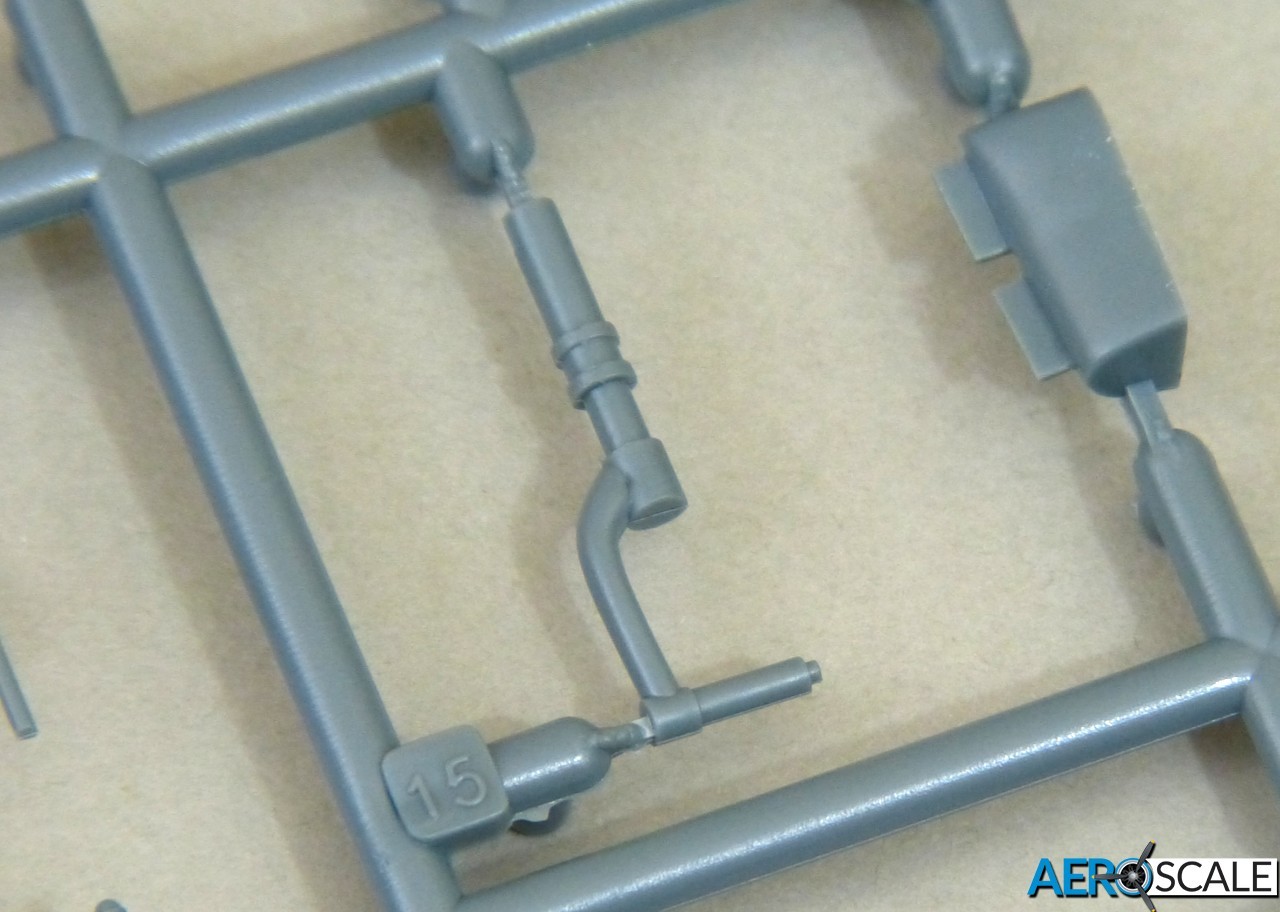
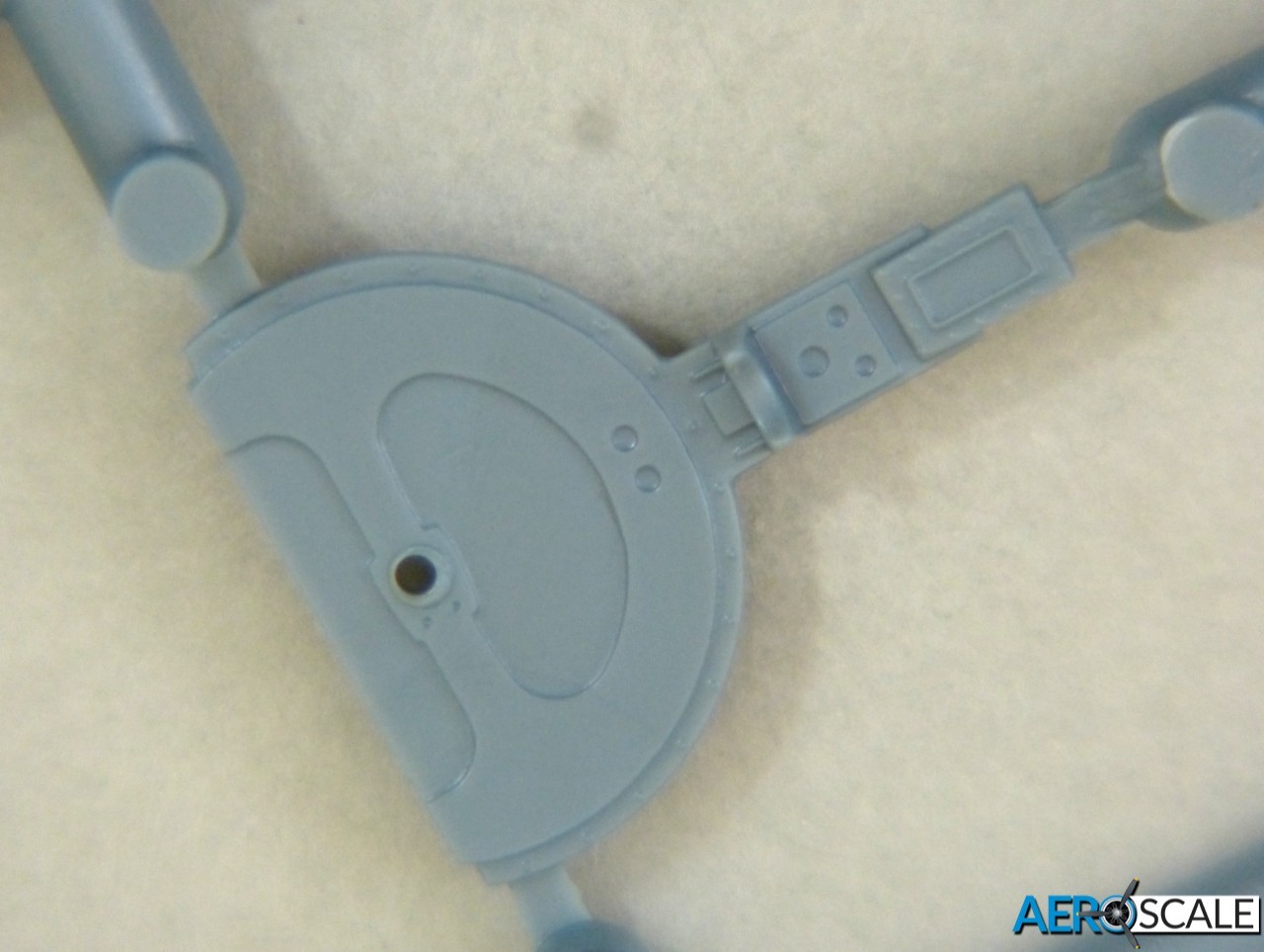



Cockpit doors are separate and can be displayed open. They're moulded clear to avoid having to insert the glazing. In this Profi-PACK boxing optional photoetched panels replace the moulded inside surfaces. Inside the canopy there's a rear-view mirror and an etched from for the armoured glass windscreen which is supplied a piece of clear film.


The propeller features separate blades. There aren't any lo lugs to set the pitch, so it'll be worth constructing a simple jig to ensure a consistent angle.
The P-400 is fitted with distinctive 12-stack exhausts. These are straightforward, but effective, and if I'm honest I doubt I'll try to go the extra mile to hollow out the openings...



The only stores shown in this boxing are a drop tank, but checking back to the original release the instructions also indicated a bomb for the centre-line rack, so perhaps that's appropriate too.

Instructions & Decals
Eduard provide a slick 16-page construction guide printed in colour with easy to follow illustrations. Assembly is broken down into logical steps and, overall, the kit should be suitable for anyone with a bit of experience. Yes, it includes photo-etched parts, but there aren't too many, so it'll be a good way to start using this type of details for anyone who hasn't tried them.



Colour matches for Gunze Sangyo and Mission Models paints are included throughout. One point to watch is that the instructions simply indicate "Interior Green", but Bell sourced their own paint that was a distinctly different colour to that used by other manufacturers. It's often referred to nowadays as "Bell Green", but this wasn't an official name.
Decals are provided for five aircraft, offering a nice variety of interesting colour schemes.
A - "Yellow Y", 80th FS, 8th FG, Port Moresby, New Guinea, Autumn 1942
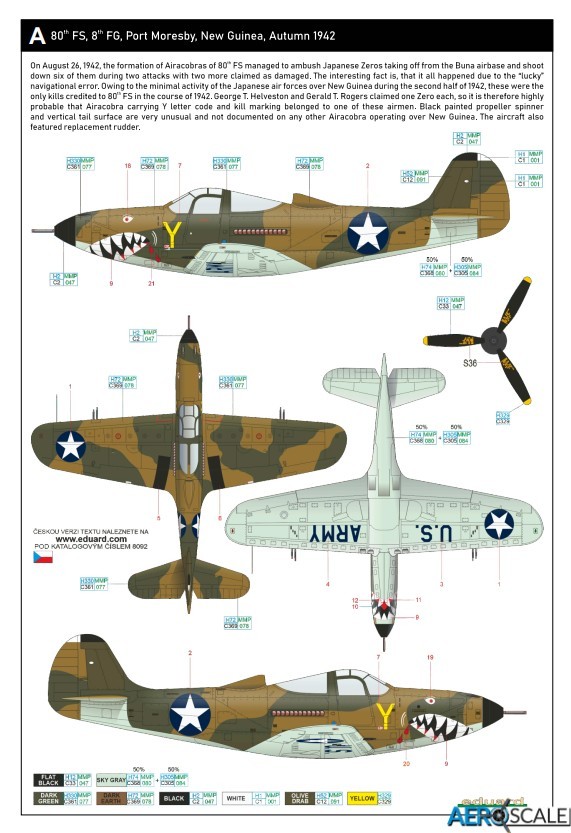
B - "The Resurrection", s/n BW157, 67th FS, Guadalcanal, Solomon Islands, November 1942

C - "Yellow V / White 18", s/n BX163, 80th FS, 8th FG, Port Moresby, New Guinea, December 1942
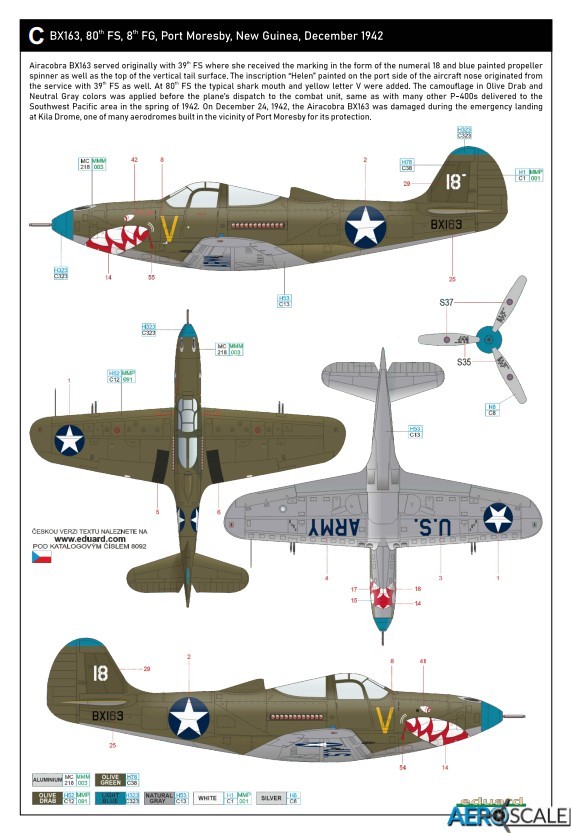
D - "Earthquake McGoon - White W", s/n AP356, Lt. Eduard J. Kurt, 35th FS, 8th FG, Milne Bay, New Guinea, 1942-43
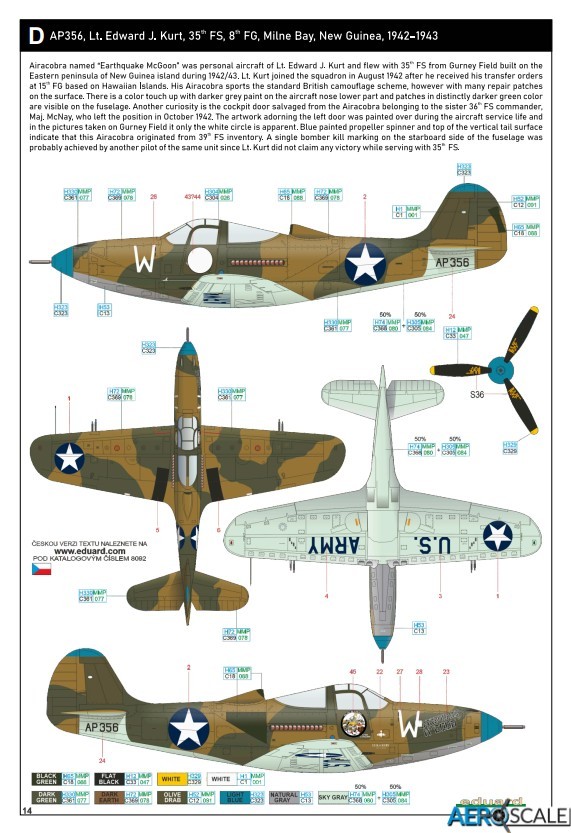
E - "Wahl Eye II / Pat - White 13", Lt. Eugene A. Wahl, 39th FS, 35th FG, Port Moresby, New Guinea, Summer 1942
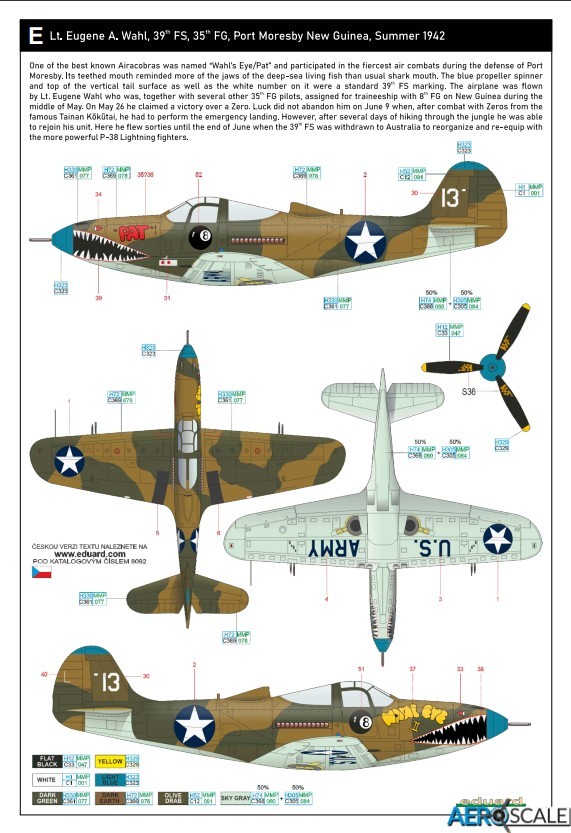
The decals look good quality, being very thin and glossy. One point I'm not keen on, though, is that some of the colours are printed as very fine dots, meaning the yellow looks a bit murky. I'm not sure how well the small text of the yellow stencil markings will work done this way.

Conclusion
It's very welcome to see Eduard's Airacobra available again. Straight from the box it will offer an enjoyable and well detailed build, while also offering plenty of scope for superdetailers to go to town.
Item #8092 is available now from Eduard - Price: £20.76
Many thanks to Eduard for the review sample.
Please remember, when contacting retailers or manufacturers, to mention that you saw their products highlighted here - on AEROSCALE



























